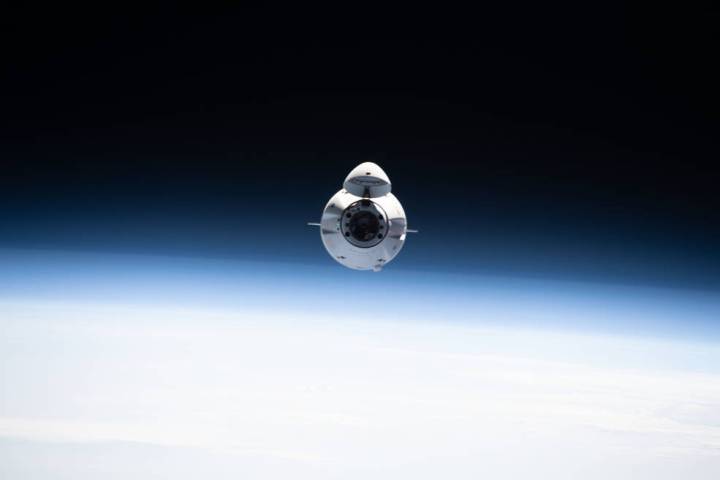This Tuesday, a SpaceX Cargo Dragon capsule will depart from the International Space Station (ISS), carrying 5,000 pounds of scientific research and other cargo back to Earth. This includes the results of scientific experiments carried out in the microgravity environment of space, which will be returned to researchers for analysis.
NASA will be livestreaming the departure of the Cargo Dragon, so you can watch live as it maneuvers away from the ISS and begins its journey back to Earth.
What to expect from the Cargo Dragon undocking

This Cargo Dragon was launched on June 3 and arrived at the ISS on June 5, carrying cargo including new roll-out solar arrays for upgrading the station’s power system and research projects including tiny tardigrades and bobtail squid.
Now all of that cargo has been unloaded, and the results of completed experiments have been loaded up in their place.
On Tuesday, NASA astronaut Shane Kimbrough will oversee the undocking of the Cargo Dragon from the station’s space-facing port on the Harmony module. The craft will then fire its thrusters to move away from the station and into position before beginning its deorbit burn and heading toward Earth.
How to watch the Cargo Dragon departure
The departure of the Cargo Dragon will be livestreamed by NASA. You can watch along using either the video embedded at the top of this page, or by going to NASA’s website.
Coverage of the departure begins at 10:45 a.m. ET (7:45 a.m. PT) on Tuesday, July 6. The undocking itself is scheduled for 11:05 a.m. ET (8:05 a.m. PT).
The Cargo Dragon will then begin its journey back from the ISS to Earth, where it is scheduled to perform a parachute-assisted splashdown in the Atlantic Ocean at around 12 a.m. ET on Thursday, July 8. The splashdown will happen just off the coast of Florida, from where the capsule will be collected and the scientific materials inside will be taken to NASA’s Space Station Processing Facility at the agency’s Kennedy Space Center in Florida.
The splashdown won’t be streamed by NASA, but you can stay up to date on the Cargo Dragon’s progress by following the ISS’s Twitter account.
Editors' Recommendations
- SpaceX slow-motion video shows powerful Raptor rocket engine shutting down
- Watch SpaceX blast its megarocket engines in spectacular test
- Watch SpaceX fire Starship’s Raptor engines ahead of 4th test flight
- Take a high-speed ride on SpaceX’s emergency escape chute
- How to watch three crew members launch to the ISS on Thursday




